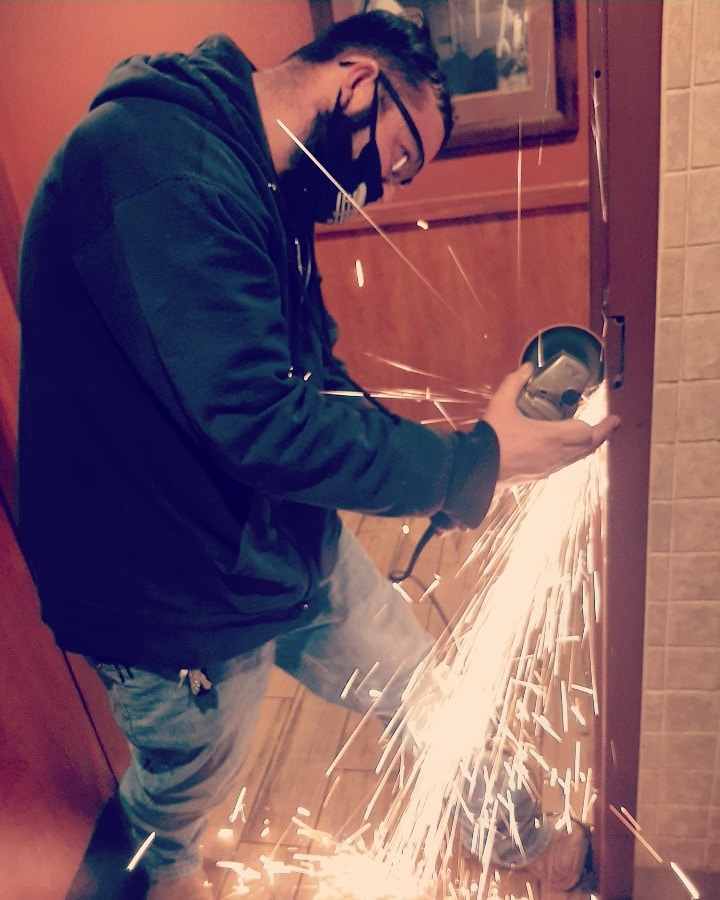Installation of a Magnetic Lock on a Commercial Property in Salt Lake City, UT
This door is getting prepped for an access security system to allow for better control and security. Now, the client will have the necessary control over who can enter this company’s property. Call today to set up a site visit so we can generate a quote! 801-966-6767.
Preparing a door for installing a new strike and hardware set is a critical aspect of locksmithing, ensuring the proper functioning of the lock and enhancing the overall security of the door. Here’s a detailed description of the meticulous process a locksmith employs for this task:
- Assessment and Measurement: The process begins with a thorough assessment of the door and the surrounding frame. The locksmith carefully measures the dimensions of the existing hardware, taking into account the type of lock, its specifications, and the size of the door.
- Marking and Positioning: Based on the measurements, the locksmith precisely marks the location on the door frame where the new strike plate and hardware will be installed. Accurate positioning is crucial to ensure the components align correctly, allowing for smooth operation of the lock.
- Drilling Pilot Holes: Pilot holes are drilled at the marked locations to guide the installation of screws and prevent splitting of the wood. The locksmith uses the appropriate drill bit size, matching the specifications of the screws provided with the hardware set.
- Chiseling Mortises: For a flush and secure fit, the locksmith may need to chisel mortises into the door and frame. This involves carefully removing wood to create recesses for the strike plate and other hardware components. The depth and size of the mortises are tailored to the specific requirements of the new hardware.
- Installing Strike Plate: The strike plate, an essential component of the locking mechanism, is then installed in the prepared mortise. The locksmith ensures a snug fit, adjusting the position if necessary to align with the latch of the lock.
- Attaching Latch and Deadbolt: If the hardware set includes a latch and deadbolt, these components are meticulously attached to the door. The locksmith ensures that the bolts extend and retract smoothly, testing the functionality of the lock at various stages of installation.
- Securing Hardware Components: Once the strike plate, latch, and deadbolt are in place, the locksmith securely fastens them using the appropriate screws. Care is taken to tighten the screws adequately without over-torquing, which could compromise the integrity of the door.
- Testing Operation: With the hardware securely installed, the locksmith conducts a comprehensive test of the lock’s operation. This includes checking the alignment of the strike plate, the smooth movement of the latch and deadbolt, and verifying that the door can be locked and unlocked effortlessly.
- Adjustments and Fine-Tuning: If any issues are identified during the testing phase, the locksmith makes necessary adjustments and fine-tunes the hardware to ensure optimal performance. This may involve tweaking the position of the strike plate or making minor modifications to achieve a perfect fit.
- Final Inspection: Before completing the installation process, the locksmith conducts a final inspection to confirm that all components are securely in place and the door functions flawlessly. This meticulous approach ensures that the newly installed hardware meets the highest standards of security and durability.
By following this detailed process, locksmiths ensure that the installation of a new strike and hardware set is not only aesthetically pleasing but also enhances the overall security and functionality of the door.



